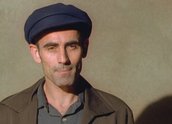


One Way Street: Fragments for Walter Benjamin (1992)
Synopsis
One Way Street: Fragments for Walter Benjamin examines the life, work and death of German Jewish critic and philosopher Walter Benjamin, his ongoing resonance in contemporary thought and his increasing recognition outside of Europe half a century after his death.
Curator’s notes
One Way Street is a timely exploration of a figure whose work, at the time of the film’s release, was in the process of becoming better known in the English-speaking world.
In this documentary, the ideas and impact of German-Jewish philosopher and critic Walter Benjamin are outlined through interviews with key English language Benjamin scholars, combined with a stylised and dynamic portrait of one of the 20th century’s most influential thinkers. One Way Street coincided with the centenary of Benjamin’s birth, the 50-year anniversary of his death and the impact of a number of new books in English about his work.
Director John Hughes uses form as well as content to provide insights into Benjamin and his ideas. He eschews linear narrative for a fragmentary approach, in keeping with Benjamin’s own rejection of linearity in favour of montage in his writings. Re-enactments, readings from his works, text, graphic elements, interviews and scenes from the present build a multi-faceted and consciously incomplete portrait of Benjamin. He comes across as a mysterious figure, much of his work still unavailable in English in 1992, many details of his life and writings lost to history in the horrors of the Second World War.
In conversation with australianscreen on 1 September 2009, Hughes explains that the project’s creative brief was to ‘counteract the genre imperatives of the biopic: the certainty and the comprehensiveness. The idea was to develop treatment ideas that would undermine a spectator’s tendency to take the work as a comprehensive, naturalistic account of a life and work.’ Biographical information is offered in glimpses, covering Benjamin’s attempted escape from the Third Reich and the Gestapo, his death from probable suicide on the Franco-Spanish border and moments from his childhood, friendships, love affairs and travels. Nazism looms large in this story; one of the film’s strengths is how it places Benjamin’s ideas in context with the monumental events of the time.
One Way Street also illustrates the ongoing resonance of Benjamin’s ideas around modernity, consumerism, image-based culture and the creation of history. Hughes juxtaposes academic discussion of Benjamin’s work with contemporary scenes with which it still resonates, such as a disintegrating Berlin Wall. In these moments, the film takes on travelogue qualities and the presence of the invisible filmmaker, on a journey to discover Benjamin, emerges.
Hughes spent a year researching One Way Street and a year making the film, during which he made two international trips to shoot Hi8 footage in Spain, France, Germany and the United States. After assembling materials from these trips, which included interviews with international academics, he worked collaboratively with a group of performance artists to develop the film’s dramatic re-enactments. Hughes’s other films include the documentaries The Archive Project (2005), After Mabo (1997), Indonesia Calling (2009) and the feature film drama What I Have Written (1995).
One Way Street was broadcast on the ABC in December 1992 and had a theatrical release at the New York Anthology Cinema and the Melbourne Panorama Cinema. It screened at a number of international festivals including the BANFF Film Festival, won an ATOM Innovation Award and received an AFI Open Craft Award nomination in 1993 for Innovation in Form.
- Overview
- Curator’s notes
- Video 3 clips
- Principal credits
- Find a copy
- Make a comment
- Map
- Add your review



